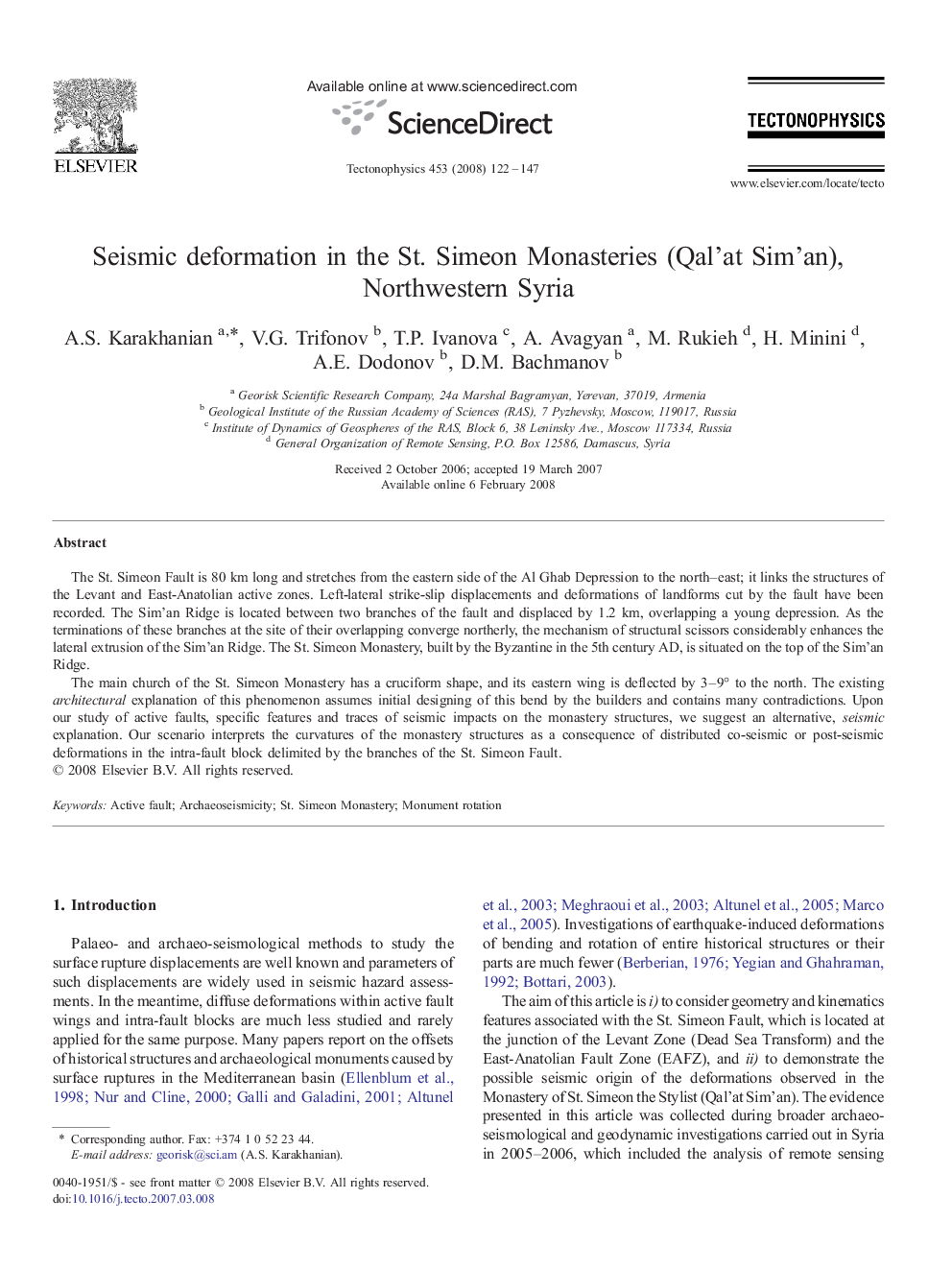| Article ID | Journal | Published Year | Pages | File Type |
|---|---|---|---|---|
| 4694535 | Tectonophysics | 2008 | 26 Pages |
The St. Simeon Fault is 80 km long and stretches from the eastern side of the Al Ghab Depression to the north–east; it links the structures of the Levant and East-Anatolian active zones. Left-lateral strike-slip displacements and deformations of landforms cut by the fault have been recorded. The Sim'an Ridge is located between two branches of the fault and displaced by 1.2 km, overlapping a young depression. As the terminations of these branches at the site of their overlapping converge northerly, the mechanism of structural scissors considerably enhances the lateral extrusion of the Sim'an Ridge. The St. Simeon Monastery, built by the Byzantine in the 5th century AD, is situated on the top of the Sim'an Ridge.The main church of the St. Simeon Monastery has a cruciform shape, and its eastern wing is deflected by 3–9° to the north. The existing architectural explanation of this phenomenon assumes initial designing of this bend by the builders and contains many contradictions. Upon our study of active faults, specific features and traces of seismic impacts on the monastery structures, we suggest an alternative, seismic explanation. Our scenario interprets the curvatures of the monastery structures as a consequence of distributed co-seismic or post-seismic deformations in the intra-fault block delimited by the branches of the St. Simeon Fault.
